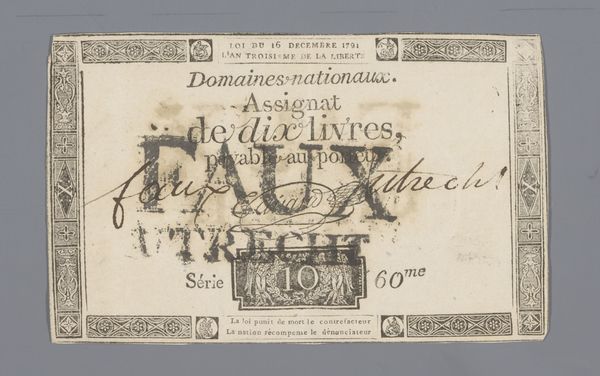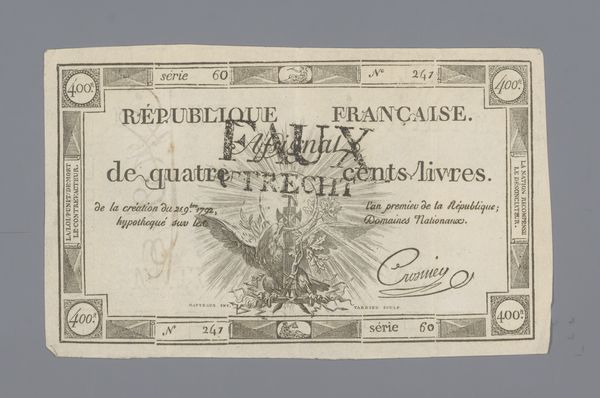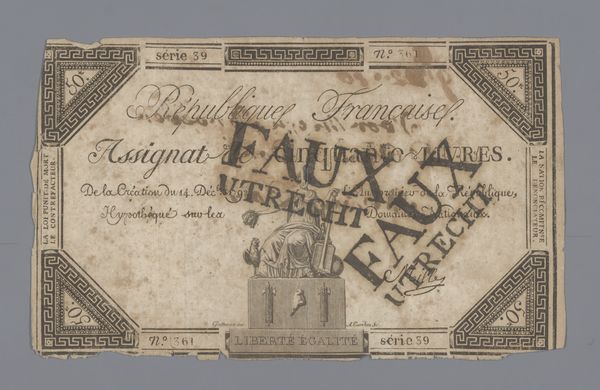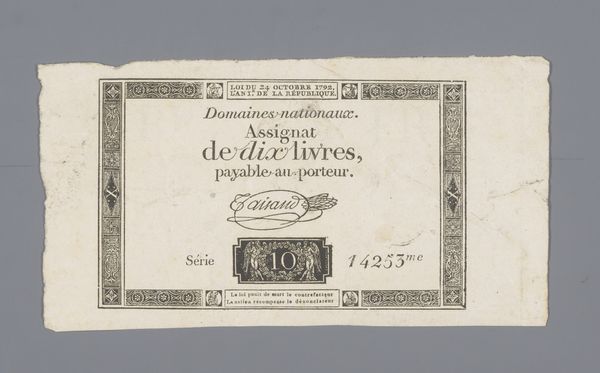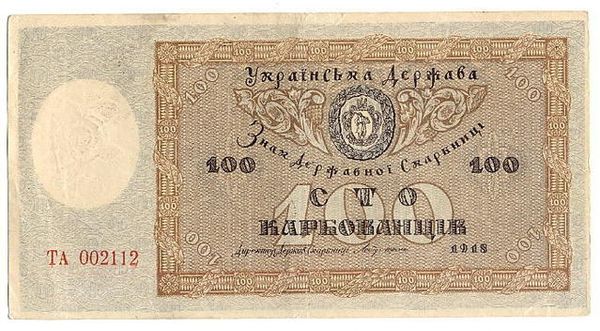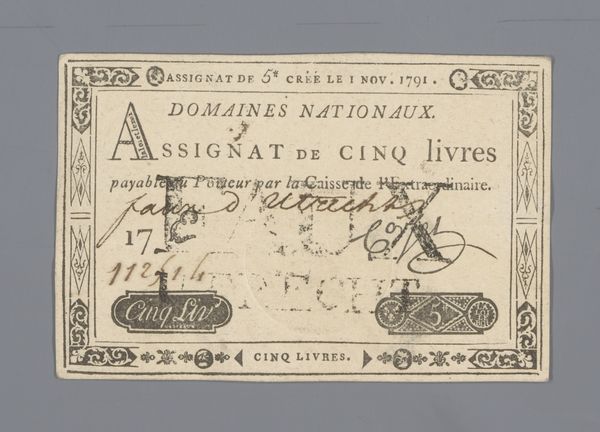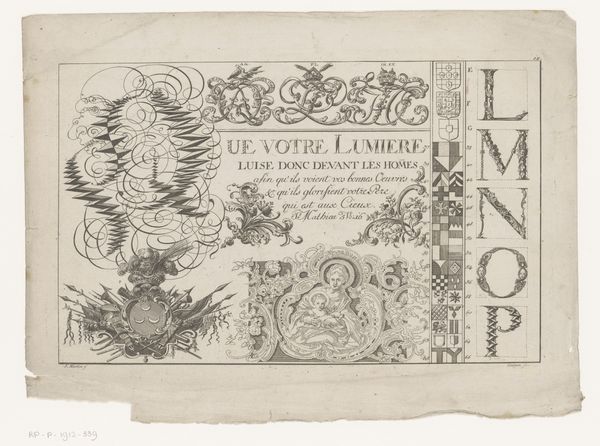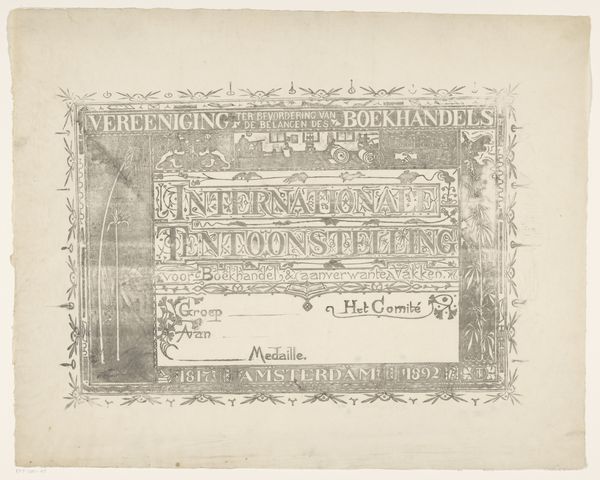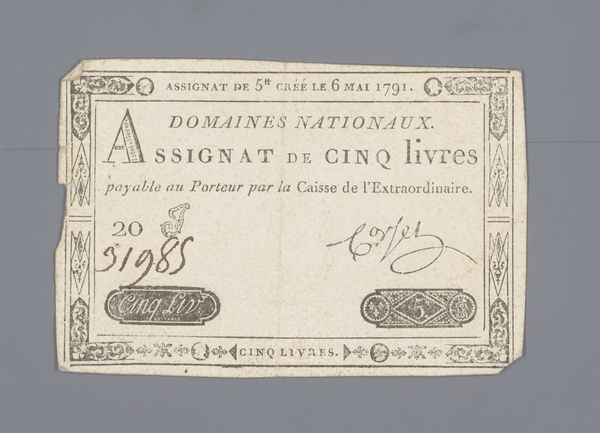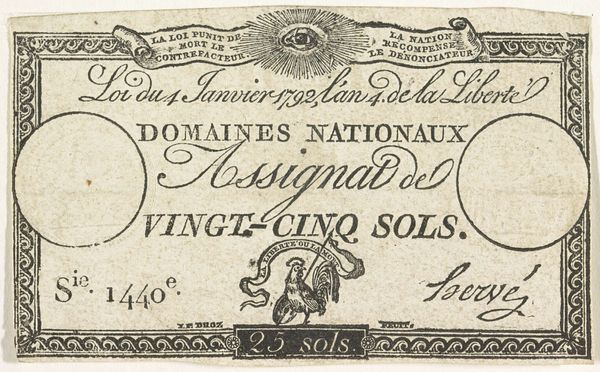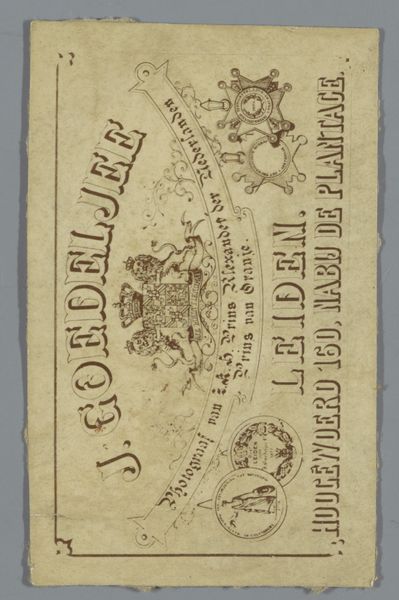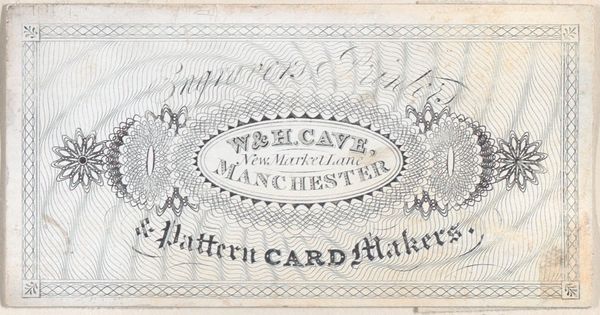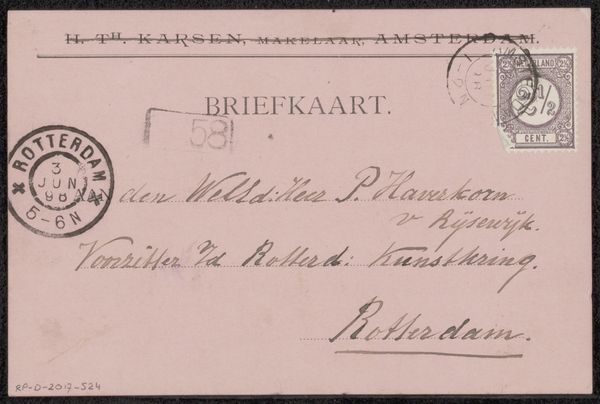
Te Utrecht ongeldig gemaakte assignat van vijftig livres, serie 616, nr. 291 uitgegeven 14 december 1792 Possibly 1792 - 1793
0:00
0:00
graphic-art, print, textile, paper
#
graphic-art
#
neoclacissism
# print
#
textile
#
paper
#
history-painting
Dimensions: height 11.8 cm, width 19.3 cm
Copyright: Rijks Museum: Open Domain
This is a fifty livre assignat, printed in 1792, and designed by Nicolas Marie Gatteaux. But as you can see by the word "FAUX" stamped across the front, this particular example is a counterfeit! It’s made using intaglio, or incised printing – a process that involves cutting an image into a surface, applying ink, and then pressing the surface onto paper. Look closely, and you can see how the ink sits slightly proud of the page. The fine lines of the printed image speaks to the skill needed to produce this currency. It belongs to the history of engraving and printmaking, but also the economic history of revolutionary France. Assignats were essentially promissory notes, issued against the value of church properties seized by the state. As the revolution progressed, and more assignats were printed, inflation soared. Counterfeiting became a serious problem, undermining public confidence in the currency. This particular example bears witness to that crisis. It’s a potent reminder that even something as seemingly simple as money is tied to wider issues of labor, politics, and consumption.
Comments
No comments
Be the first to comment and join the conversation on the ultimate creative platform.
